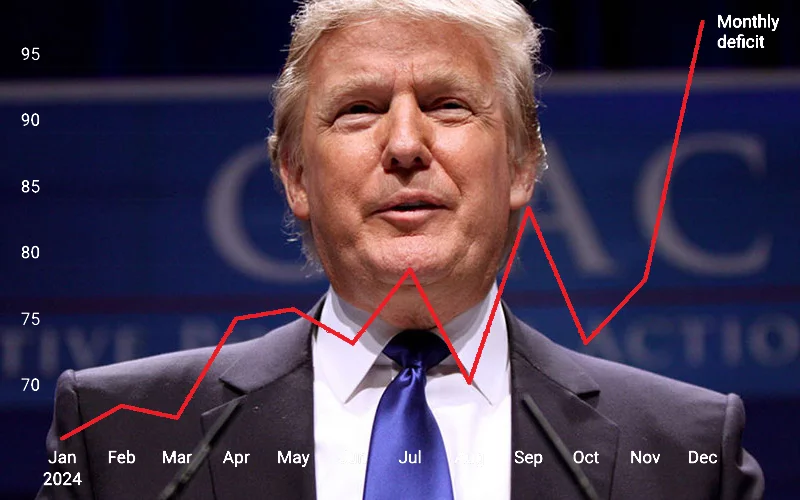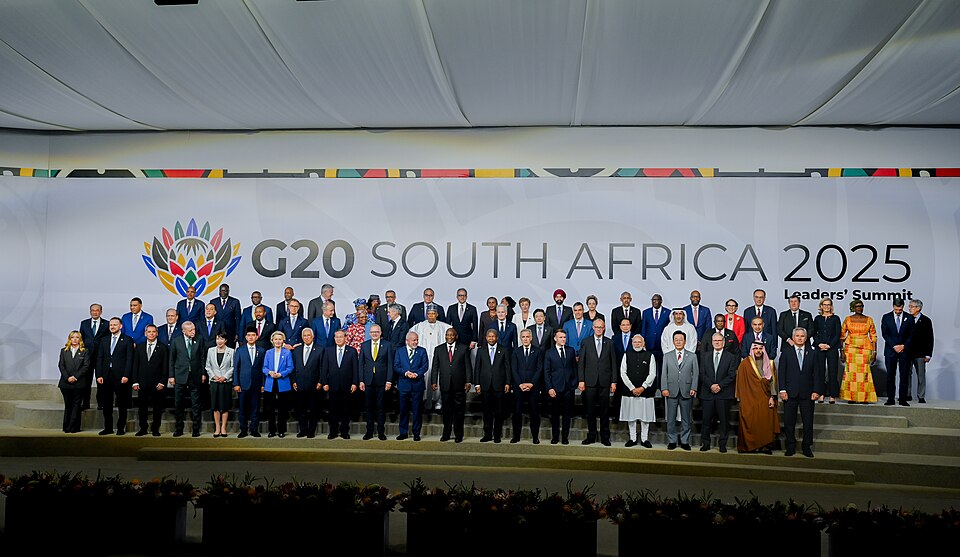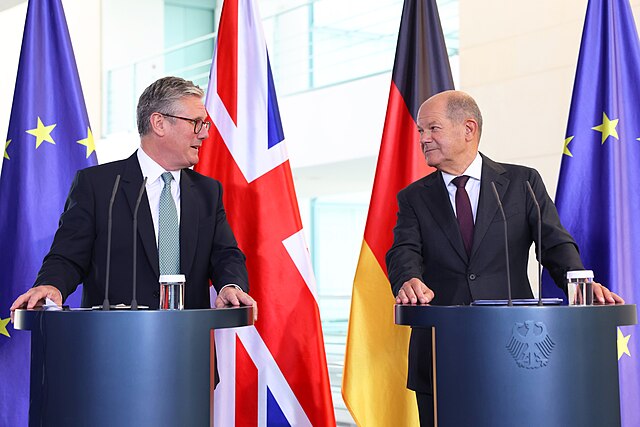It’s a topsy turvy world, or at least it is with Trump in the White House.
Wednesday 2nd April—a day designated by Donald Trump as “Liberation Day”, the day on which the United States would begin to get back its independence—he announced a basic 10% import tariff, a tax on all goods being imported into the United States. On top of that, additional tariffs were imposed on countries with a trade surplus with the US, calculated by a weird algorithm.
Paul Krugman, the Nobel prize-winning establishment economist, described Trump’s imposition of so-called “reciprocal tariffs” as the greatest shock to international trade in world history. The Economist, a right-wing British weekly magazine, admittedly with a long history of supporting “free trade”, dubbed liberation day “ruination day”. And billionaire, Trump-supporting hedge-fund trader Bill Ackman claimed that Trump’s tariffs portended an economic nuclear winter.
Over the next few days, stock markets in the U.S. and elsewhere across the world tanked. Big companies issue shares to raise money. The purchaser of a share is buying a part ownership of that company. A dividend will be paid on that share, usually annually, reflecting the profitability of the company. Shares can be traded in the secondary market, and if the company is doing well, or if there is general optimism about economic prospects, the price of the shares may rise. But shares will be sold, and share values tumble if the apparent prospects for that company (and the economy more generally) take a tumble. That’s what happened in the wake of the tariff announcement.
More than nine trillion dollars came off the value of companies listed on the New York Stock Exchange (NYSE), with the big seven tech companies some of the biggest losers. Trump’s new best friend Elon Musk saw the value of Tesla halved. But Trump was not for turning, contrary to the assumption of many Trump-watchers who had assumed he would change course if the stock markets appeared to be turning against him. If there’s no pain, there will be no gain, Trump opined, although he implied that the pain would be relatively short-lived.
However, a week later Trump blinked and suspended the additional tariffs on all countries except China for 90 days, since China had had the temerity to announce retaliatory tariffs. The reason was the rout in the bond market. Bonds are issued when money is lent to a company or government. They are certificates representing a debt rather than ownership. Typically, bonds have a maturation date when the debt represented by the bond is repaid. In the interim, typically, a certain rate of interest will be paid on the bond. This is why bonds are called a fixed income asset.
But like shares, there is a secondary market in bonds. Bond prices can and do rise and fall in that secondary market, just as they can and do in the market for shares. If there is a rise in the price of bonds, the effective interest or yield being paid on the current value of the bond will be proportionately less, and if bond prices fall, then interest or yield will rise. The state of the bond market therefore has an effect on market interest rates more generally.
The U.S. bond market rout wasn’t supposed to happen. U.S. government bonds, currently worth some 36 trillion dollars, have been seen as a very safe asset. They have anchored the world’s financial system acting as safe collateral for loans across the world. When the U.S. and other stock markets are spooked, and there is a sell-off of shares, it would normally be expected that the money realised from those sales would be ploughed into U.S. government bonds, thus bringing interest rates down. This might even be seen as a self-correcting mechanism—if interest rates fall, lower borrowing costs should be a boost to a faltering economy.
However, instead of a flight to this traditional safe haven, it seems that there was a sell-off of bonds too, thus pushing up interest rates at the same time that the stock market was falling. There is some speculation as to why this happened. It seems that hedge funds found themselves over-borrowed, in the face of some panic that Trump’s tariffs would bring both inflation and recession. Overseas holders of bonds sold off some of their holdings. Japan is the biggest overseas U.S. bond holder. Alongside China, they hold about 25% of U.S. bonds. It is thought that Japanese bondholders, rather than Chinese, were the most likely to have sold bonds, both out of concern about the future value of those bonds, and potentially to pressure Trump to reverse course. China holds some $750 billion of U.S. bonds, which may be a problem for the U.S. further down the road if Trump persists with his desire to decouple from and isolate China.
If Trump could stomach a drop of more than 10% on the NYSE, he clearly couldn’t stomach that in combination with rising interest rates. So he partially reversed course, and suspended the additional reciprocal tariffs over the basic universal 10% tariff for 90 days.
In response, the stock market bounced back and the price of bonds recovered, but not fully—and both markets continue to show volatility. Worries remained that the U.S. economy—and much of the rest of the world with it—was headed for both higher inflation and economic stagnation, or worse—“stagflation”, as it was called back in the 1970s. And despite the 90-day suspension on the additional reciprocal tariffs produced by that arcane algorithm, there are still many tariffs in place, and more in the pipeline. There are punitive tariffs on Mexico for not doing enough to stop illegal migration across the Mexican/American border. Illegal migration across that border is of course born of desperation, given the economic circumstances in countries to the South—some of which are the direct result of U.S. policies. And if Trump were to succeed in expelling 11 million undocumented migrants, the U.S. economy is likely to shrink a staggering 7%—because (no surprises here surely) migrants work and produce and help grow the economy just as they do in Europe.
There are also punitive tariffs on Mexico and Canada for not doing enough to stop the flow of fentanyl constituents into the U.S., fuelling the opioid crisis. But that crisis is the product of the aggressive marketing of big U.S. pharmaceutical companies, not the people of either Mexico or Canada. There are also secondary tariffs on countries buying oil from Venezuela, because Trump and his far-right entourage don’t like the government of Venezuela. There are also 25% tariffs on steel, aluminium, cars and car parts. And there are the 145% tariffs on all exports coming from China. Calculations show that the effective overall U.S. tariff rate is a whopping 27%—even after the 90-day suspension.
Trump has since retreated further and fully exempted smartphones, computers and other personal electronics. Apple produces most of its smartphones in China, and was facing a devastating hit to its profits. But there are semiconductor tariffs coming down the track, which will once again raise the price of smartphones and computers. And, of course, there is no guarantee that higher reciprocal tariffs won’t be restored when the 90-day suspension lapses.
Rarely, if ever, have the actions of just one man had such a dramatic effect on financial markets, and economic sentiment more generally. What lies behind Trump’s decision to impose these unprecedented tariffs.
In Trump’s fantasy world, the United States has been ripped off by friend and foe alike for the past 50 years. His evidence for this alleged rip-off is that the United States has been running an enormous trade deficit in goods for many years. Of this, there is no doubt. The U.S. balance of payments current account deficit in 2024 was over $1.13 trillion, or 3.9% of the total annual value of goods and services produced in the United States (U.S. gross domestic product, or GDP).
But in what conceivable sense is this a rip-off? The idea that the United States, still the richest country in the world by a considerable measure, has been ripped off because it imports more goods than it exports, is ludicrous.
First, this entirely ignores the international trade in services (and particularly financial services) on which the U.S. runs a trade surplus. The EU is more or less in balance with the U.S. if payments for financial and other services are taken into account.
Secondly, insofar as the American manufacturing industry has been hollowed out, this is in large part because U.S.-based companies like Apple have located or relocated production to lower-cost countries, in order to make bigger profits for themselves. When they haven’t relocated to other countries, they have sometimes relocated (or used the threat of relocation) to non-trade union states, to overcome trade union resistance. It’s not that the United States that is being ripped off by other countries, it’s the workers in both the U.S. and lower-paid countries that are being ripped off, usually by U.S.-based companies.
Thirdly, according to conventional economic wisdom, if a country runs a systemic balance of payments deficit, then the rate of exchange between the currency of that country and the currencies of other countries with a trade surplus should decline. In other words, in the case of the dollar, it should have lost value relative to the yen and other currencies.
The devaluation of the dollar relative to other currencies (if it happens) makes imports to the U.S. more expensive and exports from the U.S. cheaper. Prior to the collapse of the fixed exchange-rate system in the early 1970s, currencies like the British pound sterling and the U.S. dollar could become overvalued. But currencies have floated freely against one another since the 1970s.
However, the dollar has an exceptional status in the world. It is the international reserve currency, with most of the world’s international trade priced in dollars. This has meant that the demand for—and therefore the price of—the dollar, relative to other currencies, has remained relatively high. Higher, in fact, than would be needed to adjust the balance of payments deficit. Some in the Trump administration add this overvaluation to their list of ills to rectify. There has even been talk of a Mar-a-Lago Accord to try and lower the value of the dollar.
But the reserve currency status of the dollar, in fact, gives the United States two huge advantages. First of all, it allows the United States to import vast amounts of goods simply by issuing paper. This, of course, has been increasingly to the benefit of the rich, who account for a very high proportion of consumer spending in the United States today. And it certainly refutes the idea that there has been a rip-off by other countries. If anything, they are the ones potentially being ripped off, if there is a significant devaluation of the dollars that have been used to pay for those exports to the United States.
Secondly, a strong dollar has in fact been a policy pursued by successive administrations. The strong dollar and its reserve currency status has enabled the United States to exercise imperialist power over other countries, by cutting them off from the international financial system. This politicisation of the use of the dollar has become increasingly popular with both Republican and Democrat presidents in recent years.
U.S. imperialism is yet another reason why the idea that they have been ripped off is just about the very opposite of the truth. U.S. imperialism hasn’t generally operated through the colonisation of other countries. It has operated instead through its economic, political and military dominance, over the course of which profits have been extracted—i.e. ripped off—from, in particular, poorer countries
The second part of this article will appear on theleftberlin.com tomorrow (Sunday, 20th April)




